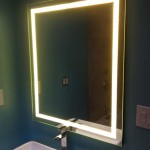How to Mirror iPad Screen to a Computer
Mirroring an iPad's screen to a computer offers significant advantages for presentations, demonstrations, online teaching, and content sharing. This process duplicates the iPad's display onto a larger screen, enhancing visibility and engagement for audiences. Several effective methods facilitate this mirroring functionality, each with its own set of features and benefits.
Using AirPlay with a Compatible Mac
AirPlay, Apple's proprietary wireless streaming technology, provides a seamless method for mirroring an iPad to a compatible Mac. Both devices must be on the same Wi-Fi network for AirPlay to function correctly. On the iPad, the Control Center is accessed by swiping down from the top-right corner (or up from the bottom on older models). Tapping the "Screen Mirroring" button displays a list of available AirPlay receivers, including compatible Macs. Selecting the desired Mac initiates the mirroring process.
Utilizing QuickTime Player on a Mac
QuickTime Player, a pre-installed application on macOS, offers an alternative mirroring solution. Connecting the iPad to the Mac via a USB cable is the first step. Opening QuickTime Player and selecting "New Movie Recording" from the File menu prepares the application for capturing video. A drop-down menu next to the record button then allows the user to select the connected iPad as the video source. This method provides a wired connection, potentially offering a more stable mirroring experience, especially in environments with congested Wi-Fi networks.
Mirroring to a Windows Computer with Third-Party Applications
Mirroring an iPad to a Windows computer requires third-party software, as Windows does not natively support AirPlay. Numerous applications cater to this requirement, offering varying features and price points. Some popular choices include Reflector, LonelyScreen, and AirServer. These applications typically create an AirPlay receiver on the Windows computer, allowing the iPad to connect wirelessly, similar to the process used with a Mac.
Choosing the Right Mirroring Method
Selecting the optimal mirroring method depends on several factors. AirPlay offers a convenient wireless solution for compatible Macs. However, network stability can influence performance. A wired connection via QuickTime Player provides a reliable alternative, albeit with the constraint of a physical cable. For Windows users, third-party applications are essential, and choosing the correct software depends on individual needs and budget.
Troubleshooting Common Mirroring Issues
Occasionally, users may encounter difficulties during the mirroring process. Ensuring both devices are on the same Wi-Fi network is a crucial first step for wireless mirroring. Restarting both the iPad and the computer can often resolve minor software glitches. Checking for updates for both the iPad's operating system (iPadOS) and the mirroring software (if applicable) is also advisable. For wired connections, verifying the integrity of the USB cable is important.
Optimizing the Mirrored Display
Once mirroring is established, adjusting display settings can enhance the viewing experience. Matching the computer's resolution to the iPad's native resolution can prevent scaling issues and ensure optimal clarity. Adjusting brightness and contrast settings on the computer's display can further improve visibility, particularly in different lighting conditions.
Understanding the Limitations of Screen Mirroring
While screen mirroring provides a convenient way to share an iPad's display, it has limitations. Mirroring duplicates the iPad's screen, meaning any actions performed on the iPad are simultaneously displayed on the computer. This method is ideal for presentations or demonstrations where the focus is solely on the iPad's content. For interactive scenarios where content on the computer needs to be accessed while the iPad is mirrored, extending the display, if available, might be a more suitable option.
Exploring Alternative Screen Sharing Options
In certain situations, alternative screen sharing methods might be more appropriate than traditional mirroring. For instance, cloud-based collaboration tools often allow users to share specific applications or windows rather than the entire screen. This approach can be more efficient and less bandwidth-intensive than mirroring, especially when only a portion of the iPad's screen needs to be shared. Investigating these alternative options can provide a more tailored solution for specific needs.
Considering Security Implications
When mirroring an iPad to a computer, especially in a public or shared setting, security considerations are important. Ensuring the Wi-Fi network is secure and using strong passwords for any third-party mirroring software can help prevent unauthorized access to the mirrored content. Disconnecting the mirroring session when finished is a crucial step in maintaining data privacy.

Best Ways To Mirror Pc Ipad

5 Effective Ways How To Mirror Your Ipad Screen Pc

How To Screen Mirror Ipados 15 Windows

5 Effective Ways How To Mirror Your Ipad Screen Pc

5 Ways To Mirror Ipad Pc With Ease Full Guide

How To Mirror Ipad Screen Windows Pc Laptop No Mac Required 2024

How To Share Ipad Screen On Pc 5 Ways

How To Mirror Ipad Pc Via Usb New Guide

How To Mirror Share Your Ipad Screen On Mac Computer

How To Mirror Your Ipad On Mac Or Pc








